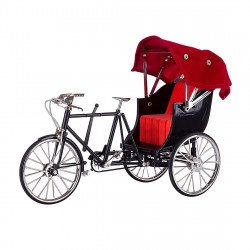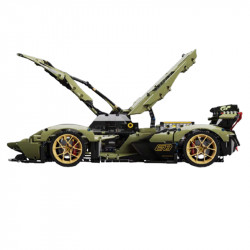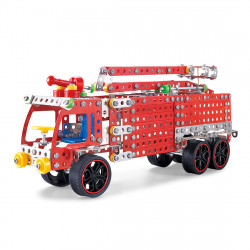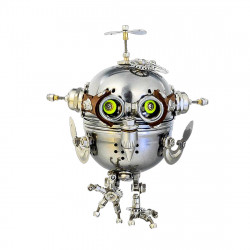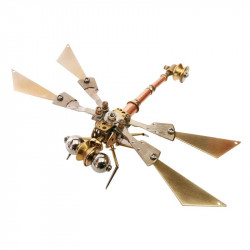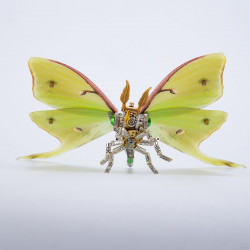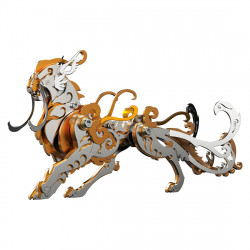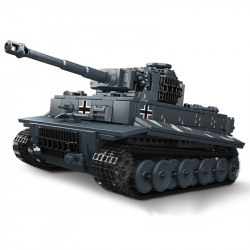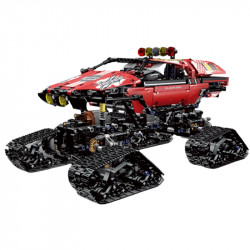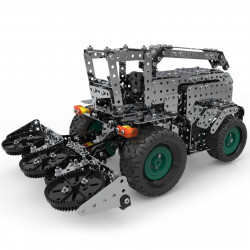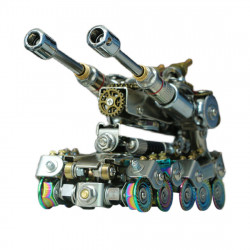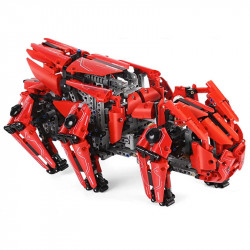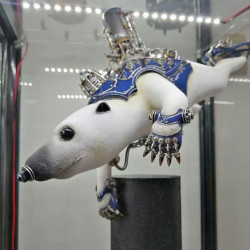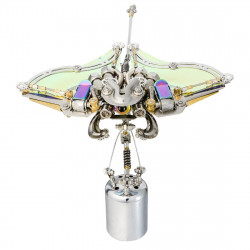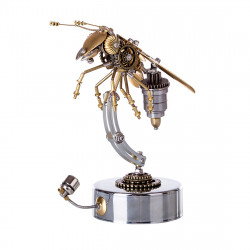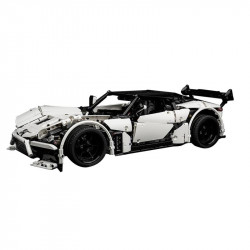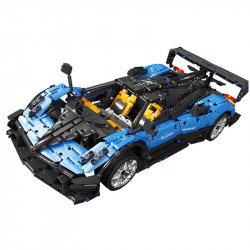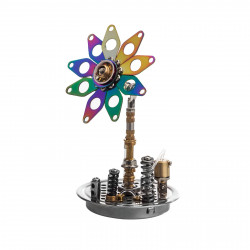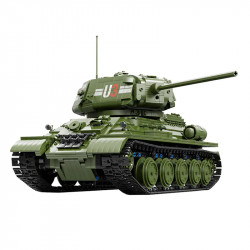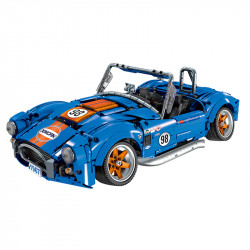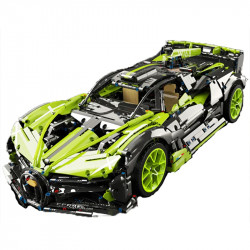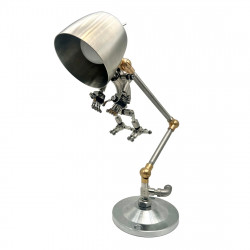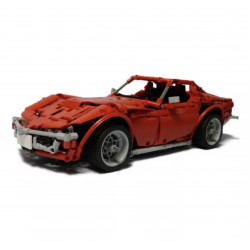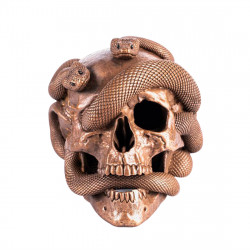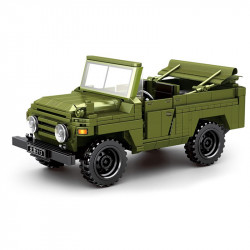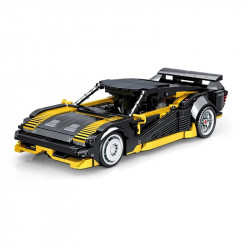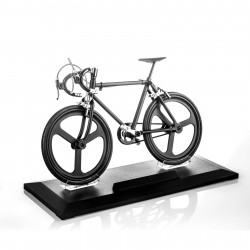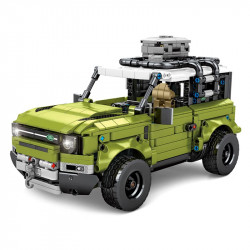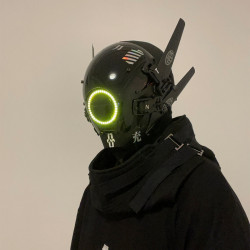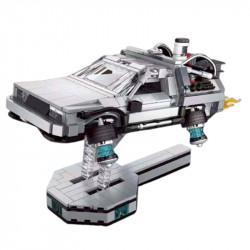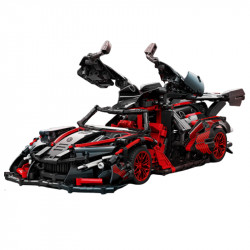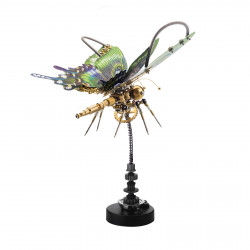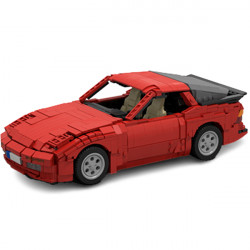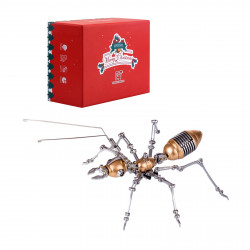Why is Steampunk so fascinating?

Why is Steampunk so fascinating?
First, let's talk about the background of the steampunk era.
Steampunk has a prototype of a historical backdrop that corresponds to its overhead world vision. The reign of Queen Victoria of the United Kingdom serves as its primary inspiration. The bourgeoisie rose in social standing, humankind entered the industrial age, and various natural sciences and technologies blossomed throughout that time. The invention of machines freed many workers, a period of immense material wealth began, medical advancements were made, and people's lives were prolonged. Additionally, revolutionary concepts emerge gradually. The strength of the European nations represented by the United Kingdom was greatly enhanced, and travel times were shortened by steam-powered trains and ships.
Utopianism and technology bring a bright future to people.
Romantic optimism is prevalent in the steampunk age. The advancement of natural science has swept away religious tyranny and superstition, industry has somewhat freed the workforce, culture has progressively become more educated, and people are naturally curious about the world. People have high hopes for the advancement of technology.
Here, a comparison must be made. Because humanity first discovered the destruction of technology after the end of World War II, when they used atomic bombs in battles, cyberpunk, another overarching subject, offers a negative view of the advancement of science and technology. Technology and power can quickly wipe out civilization. Because cyberspace, genetic engineering, artificial intelligence, nuclear energy, and other cyberpunk fundamentals have the potential to wipe out human civilization, people in the cyberpunk theme are wary and sceptical of the technology.
Black Technology
Steampunk fiction, movies, and video games, part of the human world of historical parallel universes, feature several scenarios where people point to the technological tree as an alternate world perspective; for instance, with a different engine, a computer is only powered by mechanical means.
Figure: A different engine that uses mechanical structure to function. Following the widespread usage of electricity and the invention of vacuum tubes, there is no concept of [network], even though the idea of a computer first emerged during the steampunk era. This is because computers can only perform basic calculations and cannot execute complex programming.
Since the production technology level at the time did not create an internal combustion engine that could regulate oil energy, coal is the primary power source if the steampunk setting is more realistic.
The steam ball in Otomo Keyang's film "Steam Boy," the Claudia minerals in the TV cartoon "Final Exile," and the magical power source in the "Final Fantasy" video game series are just a few examples of the numerous overhead power sources.
Because excessive electricity usage will eventually replace the intricate gear transmission control mechanism typical of the original steampunk worldview, having too many electric gadgets in the steampunk worldview is prohibited. A simple electrical signal can provide Long-distance transmission of various complex instructions, eliminating the need for numerous complicated and laborious gear links to transmit instructions. The invention of electricity also led to the creation of a computer with electronic tubes as the computing unit capable of handling complex programming. It will be overshadowed by Command, the black technology that first surfaced in Steampunk.
The Steam City console from the film "Steam Boy" is depicted in the image, which relies on unwieldy mechanical structures to send commands. There will be a lot of workforce at the end of many machines because depending on the mechanical structure to transmit commands necessitates many metal parts, increasing weight. On the other hand, metal fatigue makes it easy to cause errors, and mechanical energy transmission is lossy. The controller uses the old ship's standard microphone to instruct the control worker at the end of the machine to finish operating the big machine.
Furthermore, Steampunk is not associated with electric motors, gasoline rocket engines, jet engines, or other power components. Because the steampunk era relies entirely on mechanical devices to transfer steam power to the power mechanism for work, the steam power is transferred through mechanical devices due to friction, heat transfer, and excessive mechanical weight. In the steampunk worldview, it also produces a massive mechanical shape with a distinct violent beauty despite the medium's high loss and incredibly low energy conversion efficiency.
The steam ball's power is transmitted across most of the steam metropolis. Giant cannons and ships, more steaming and thrilling. Weapon of violence and beauty. Because capitalism developed rapidly between the Victorian era and World War I, capitalist-dominated regimes started reshaping the global order. Nations have constructed many steam-powered ironclad ships. Turrets are becoming more and more common generally. A beautiful military romance exclusive to this age is the battleship invincibility of the large ship and the cannon (this romance was broken following the emergence of the RPG Rocket God and the flat top ship heretic in World War II).
Multiple turrets: Before the development of guided weapons and ballistic computation, the hit rate of artillery was extremely low, so the rate of fire and the quantity of artillery must make up for the lack of accuracy.
In the steampunk era, armour could only be spliced with a piece of armour plate and then fixed with numerous rivets because it was impossible to cast into large, intricate metal structures simultaneously. Modern technology did not have composite materials, and the welding process was not sophisticated enough.
At that time, coal was the primary energy source used by humans, with steam serving as the power source. Controlling explosive fuels like oil was technically impossible, and there was no internal combustion engine with a more potent thermal energy conversion efficiency and power. It frequently took several hours to ignite the steam boiler and get the battleship rolling in the early steam-powered ironclad fleet battles.
Rigid suspension: Prior to the development of different spring-dampening suspension shock absorbers, tanks using rigid suspension devices moved very slowly—not even infantry moved quickly—because of the high resistance. These days, military equipment is often awkward. There are numerous violently aesthetically attractive weapons in the steampunk worldview.
There are numerous violent aesthetic weapons in the steampunk worldview.
Howl's Moving Castle by Hayao Miyazaki features the Iron Armored Fleet.
Real ironclad
Early ironclad ships still had sail masts, and modern and antiquated vessels coexisted.
The Iron Fortress's armored train in Cabanelli.
Guangwu is the steam-powered mecha from "Sakura Wars" battling a boiler.
The enormous airship in Final Fantasy XII.
During World War I, tanks and other weapons of all types were primarily distinguished by using numerous rivets to join armour plates. A key visual component of steampunk battleships, tanks, and fortifications is the [multi-turret]. The early artillery could only compensate for the lack of long-range shooting accuracy by increasing the number of gun barrels since it lacked precision guiding. Multi-turrets were only gradually removed from the historical stage with the advent of rockets that use computer precision guidance and aircraft carriers that could hit warships farther away than naval guns could reach.
The whole population of the fortified city in Otomo Keyang's "Street of Cannons" views firing guns as a daily obligation.
"Street of Cannons"' enormous cannon. To fire the gun, hundreds of people must cooperate. During World War II, Nazi Germany's Gustav super-heavy railway cannon served as the template for reference.
Decor style that is mechanically designed.
The field of industrial modelling design, which we use today to create industrial machinery, did not emerge during the steampunk era. There were no full-time designers to develop industrial products back then, and the "work" and "art" of craft modelling were not separated. Modelling. Industrial items from that era had a somewhat patchwork-like appearance, and the idea of [decoration] was employed to create the product's look. It Gives off a "fancy" vibe.
The car in "The Soldier" is embellished with exaggerated reliefs in the Baroque style, a more popular decorative style in Steampunk.
This is a straightforward analogy. Several pointless embossed patterns are added to the Baroque-style decoration of the steam locomotive's design above. The steam locomotive down below has a straightforward Bauhaus design. A streamlined shape is intended to lessen wind resistance during high-speed driving by the locomotive head's functions.
Picture: The body is adorned with Victorian-style baroque patterns, numerous exposed hydraulic transmission devices and pipelines, rivets holding the armour seams together, and brass-textured armour, a typical steampunk element.
A vintage Victorian aesthetic with a sense of the times.
During the 19th-century reign of Queen Victoria of England (1837–1901), the Victorian style of artistic restoration emerged. It began a new form of art in human existence, reinterpreted the classical meaning, and rejected the aesthetics of mechanical logic—value definition. The most notable outcome of the 19th century, a time of swift political, economic, and social transformation, was the rise of a prosperous middle class. Wealth and increasing social standing have made the middle class more conscious of their evolving living conditions and interior design preferences, and they are keen to explain and celebrate their accomplishments in residential architecture. Consequently, the decoration-based "Victorian style" emerged. Mass production was made feasible by the Industrial Revolution, and "patterned" design and manufacture became a practical, affordable, and universal standard. This created the ideal opportunity for the Victorian style, which preferred the free blending of all decorative element styles and ultimately outperformed all others. It's challenging to define Victorian style because it encompassed a wide range of ornamental features, a fusion of styles, and the application of creative ornamentation without a clear style foundation, common in furniture and other object designs at the time.
One significant development in the history of global design is the Victorian style of the 18th century. The royal family's creative needs were better reflected in the design expression due to the fame and adoration of the medieval Goethe style. In visual design, exoticism, pretentiousness, and heavy ornamentation are crucial.
The image depicts the game "The Order 1886" concept design draft. Victorian architecture is characterized by a blend of Gothic and Baroque influences.
The buildings and streets in "Bloodborne" are baroque.
Although they have entered the industrial society, the architectural shapes of typical homes in Victorian-style towns and streets featured in Hayao Miyazaki's Howl's Moving Castle are still wood and brick structures; large-scale reinforced concrete buildings have not yet been seen in the folk.
The interior design is in the style of Rococo. The women in the photo are wearing Victorian clothing.
The Royal Palace in the background has a traditional Baroque shape.
The interior is a stunning blend of Baroque and Rococo design.
Victorian women's fashion is defined by the widespread use of lace, spun yarn, ruffles, ribbons, bows, multi-layered cake cutting, folds, stand-up collars, smocks, and other accessories.
Outfit from the video game Bloodborne.
The game "The Order 1886" features a military costume from the 19th century that is typical of the steampunk worldview.
Another significant visual component of the steampunk worldview is gas masks.
The same significant historical context as Victoria in the steampunk worldview—Japan's [Taisho] era—needs to be acknowledged here, in addition to the traits of the Victorian age in the West.
The term "Taisho era" describes the brief and relatively stable years from 1912 to 1926, when Emperor Taisho ruled.
The main characteristic of this period is that Taisho Democracy spread in all cultural domains. Japan had its most wealthy era since the Meiji Restoration during the early Taisho period. Many parallels can be found with Victorian England. In addition, Japan adopted several advanced political, scientific, and technological systems during the Meiji Restoration, following the United Kingdom's lead. Additionally, the military was constructed using the organizational structure of developed nations in America and Europe.
The visual components of many steampunk worldviews set in Japan have a definite Taisho-era aesthetic—Additionally, both the advanced and the backward coexisted during the Taisho period. Numerous mashup components featured blatantly different buildings and attire from various eras.
"Kabanelli of the Iron Fortress" and "Sakura Wars" are more well-known.
Women's attire from the Taisho period.
Student attire from the Taisho period.
The characters' outfits from "Sakura Wars" showcased the latest European and American military uniform designs.
"Sakura Wars" protagonist Sakura Shinguuji is clad in authentic Taisho-era Japanese women's attire.
Modern electric railroads, European and American-style street lamps, buildings, and the Taisho-era Japanese street scene combine classic European and Japanese architectural elements.
Magic and technology coexist; advanced and backward coexist.
The well-known British author Clark famously asserted that, on the surface, any sophisticated technology is identical to magic. Particularly in the romantic steampunk world, the settings of many early sci-fi writings lacked much realistic rational logic. Literary works frequently add a number of mystical aspects to the steampunk worldview.
In Howl's Moving Castle, Hayao Miyazaki once created a world where magic and steam technology coexisted.
Howl's Moving Castle.
Its primary power source is the fire demon that made a deal with the magician Howlrce.
This type of liquid-like summoning demon also appears frequently in the movie.
The belly spit out of the airship is a mystical flying creature.
It is a rather malevolent figure up close.
Howl fights adversaries by using magic to change into a bird-like position.
To fly, many of the movie's airships have wings resembling insects.
This gloomy familiarity permeates the airship's interior as well.
Upon closer inspection, the tiny wings that protrude beneath the wings resemble those of insects, and the airship as a whole ought to be powered by magical beings.
In addition, a large number of uniformed soldiers are pursuing Hal Familiar.
It is evident that magical creatures are not only utilized as the source of power for different devices in Howl's Moving Castle worldview but are also propelled by force and work.
Steampunk and magic themes are mixed in many pure steampunk worldviews, as in the "Final Fantasy" and "Warcraft" series games. These use a few steampunk vehicles and weapon settings; they don't use steam. Punk's distinct historical style—the Victorian era in England and the Taisho period in Japan—is included in the piece, while magic continues to dominate the design tone.
Airships in Final Fantasy XII.
Steampunk is also heavily incorporated into the goblin and gnome technology in the "Warcraft" video game series.
Why is Steampunk so fascinating?
People's desire for utopia is what makes it so alluring. The first step toward solving the riddles of nature has been taken by humans, who recently discovered how to approach God. This technology's divine power releases humanity from the mental shackles of feudal incarceration and the arduous manual labour and subpar material limits that have existed for thousands of years. Since the beginning of human history, human imperfections and backward forces have coexisted; the advanced and the backwards have struggled; people have driven large, ungainly machines to fly along the path of civilization development, mercilessly destroying ancient objects; people have engaged in constant exploration and innovation; and they have used their wisdom to write a brilliant chapter of industrial civilization. Humans carelessly waste the innumerable advantages produced during the First Industrial Revolution, and people daydream about exploring the new world before the actual technical crisis (cyberpunk theme) arrives. The steampunk motif reflects our lovely imagination of that romantic era, much like a world in a mirror.
There is still a wealth of information regarding Steampunk that merits careful examination. As I develop ideas for additions, I will progressively sort them out and publish them in my column.
